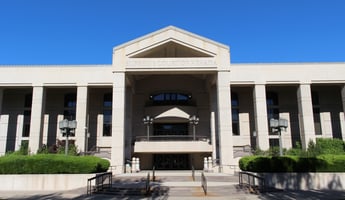IRS Rules on Private Foundations Issues on Testamentary Bequest of Art Collection

In recently issued Ltr. Rul. 202204003, the IRS addressed the issue of whether the public recognition or acknowledgment of the names of disqualified persons of a private foundation by a charity receiving a loan of artwork from the private foundation constitutes an act of self-dealing under IRC § 4941. Also addressed in this ruling is whether the long-term lending of an art collection by the private foundation to art institutions constitutes the use of assets directly in carrying out the foundation's exempt purpose under IRC § 4942(e)(1)(A) and that, accordingly, the value of the Art Collection is excludable in computing the foundation's minimum investment return for purposes of IRC § 4942(e)(1).
Facts
In Lt. Rul. 202204003, an individual, “X,” was the settlor of a revocable trust (“Trust”), which became irrevocable upon death. The same individual was on the board of directors of a private foundation (“Foundation”). The trust owned an art collection (the “Art Collection”) that was not encumbered by any debt nor subject to any known liens. After the death of X, the Art Collection was to be distributed to the Foundation, along with substantial cash gifts to be used to pay for curatorial expenses and for building appropriate gallery space to display the Art Collection. X and the Trust are all disqualified persons within the meaning of IRC § 4946 with respect to the Foundation.
The Foundation has a long history of furthering exempt educational and charitable purposes by supporting the arts through grantmaking and other efforts. The Foundation represented that, upon receipt of the Art Collection, it will engage in an active art loan program whereby the Art Collection will be loaned out to suitable art institutions. Specifically, following its receipt of the Art Collection after X’s death, the Foundation planned to enter into one or more long-term artwork loan arrangements for purposes of publicly exhibiting the artwork in the Art Collection (“Loan Arrangements”) with one or more museums, galleries, libraries, foundations, universities, or other not-for-profit institutions (“Art Institutions”). The loan of the Art Collection will be made without charge and the Article Collection would be free of any encumbrances or liens.
The Foundation anticipated hiring, or funding the hiring of, a curator to manage the Art Collection, including determining objects appropriate for loan to Art Institutions. The Foundation’s responsibilities with respect to the Loan Arrangements will include: (i) selecting the Art Institutions for public exhibition of artwork in the Art Collection; (ii) evaluating and funding the acquisition of additional artwork for inclusion in the Art Collection; (iii) arranging for the packing, shipping and eventual return or extension of any loan of the artwork in the Art Collection; (iv) overseeing the insurance, care, maintenance and preservation of artwork in the Art Collection; (v) supporting costs associated with providing adequate space for exhibition of artwork in the Art Collection; and (vi) helping the Art Institutions publicize their exhibition of artworks in the Art Collection.
When entering into a Loan Arrangement with an Art Institution, the Foundation will consider: (i) the Art Institution’s ability to safeguard the artwork while on exhibition and in transit; (ii) the facilities that the Art Institution will have to exhibit artwork in the Art Collection; (iii) the cultural and artistic value that the Art Collection will have to that Art Institution and its greater community; and (iv) the Art Institution’s ability to maximize the general public’s exposure to the Art Collection. During the term of each Loan Arrangement, it is expected that most of the artwork in the Art Collection will be under the management of the Art Institutions. This will include being on public exhibition, in the Art Institution’s storage, or, for selected artwork subject to the Foundation’s consent, on temporary loan to or exhibition by other museums, universities, and similar not-for-profit institutions to enhance the reputation of and maximize public exposure to the Art Collection.
When the artwork in the Art Collection is not in the custody of or under the management of an Art Institution, the artwork will be in transit, in storage for future exhibitions, subject to restoration or reconditioning as appropriate, or available for study and analysis by scholars and art experts, the expenses of which will be paid by the Foundation. The Foundation also anticipates monitoring and protecting copyright and legal ownership of the Art Collection, and from time to time entering into licensing agreements related to use of the likeness or images of artwork in the Art Collection.
When the artwork in the Art Collection is exhibited at an Art Institution, it is anticipated that the display will include recognition or acknowledgment of the gift to the Foundation made by X and/or of members of his family (“Family) that made it possible for Art Collection to be exhibited. X and the Family are disqualified persons under IRC § 4946.
Ruling Sought
The rulings sought were as follows:
- The distribution of the Art Collection from the Trust to the Foundation and any subsequent recognition in name only of X and/or the Family in connection with the donation and use of the Art Collection will not be considered acts of self-dealing under IRC § 4941.
- All the artwork in the Art Collection that will be subject to the Loan Arrangements will be assets used or held for use directly in carrying out the Foundation's exempt purpose under IRC § 4942(e)(1)(A) and that, accordingly, the value of the Art Collection will be excludable in computing the Foundation's minimum investment return for purposes of IRC § 4942.
IRS Rulings
Public Recognition or Acknowledgment of Disqualified Persons
The IRS ruled that the recognition or acknowledgement of X and/or the Family, members of which are disqualified persons with respect to the Foundation, in connection with the donation and use of the Art Collection is an incidental or tenuous benefit and will not therefore constitute an act of self-dealing under IRC § 4941(a)(1), citing the following authority:
- Reg. § 53.4941(d)-2(f)(2) provides that the fact that a disqualified person receives an incidental or tenuous benefit from the use by a foundation of its income or assets will not, by itself, make such use an act of self-dealing. Thus, the public recognition a person may receive, arising from the charitable activities of a private foundation to which such person is a substantial contributor, does not in itself result in an act of self-dealing because generally the benefit is incidental and tenuous.
- Reg. § 53.4941(d)-2(f)(9), Example 4 concludes that a private foundation naming a neighborhood recreation center after the disqualified person who donated real estate the private foundation used to build the recreation center provides only an incidental and tenuous benefit to the disqualified person and, by itself, is not an act of self-dealing.
- Rul. 73-407, 1973-2 C.B. 383, holds that a contribution by a private foundation to a public charity made on the condition that the public charity change its name to that of a substantial contributor to the foundation and agree not to change the name again for 100 years does not constitute an act of self-dealing under IRC § 4941(d)(1)(E). The ruling states that the public recognition that the disqualified person receives from the charitable act of the private foundation is an incidental and tenuous benefit within the meaning of the regulations.
Use of Art Collection Directly in Carrying Out the Foundation's Exempt Purpose
The IRS ruled that all of artwork in the Art Collection that will be subject to the Loan Arrangements will be assets used (or held for use) directly in carrying out the Foundation’s exempt purpose under IRC § 4942(e)(1)(A) and, accordingly, the value of the Art Collection will be excludable in computing the Foundation’s minimum investment return, citing the following authority:
- Reg. § 53.4942(a)-2(c)(3)(i) provides that an asset is used (or held for use) directly in carrying out the foundation’s exempt purpose only if the asset is actually used by the foundation in carrying out its exempt purpose or the foundation establishes that its immediate use for such exempt purpose is not practical and that definite plans exist to commence such use within a reasonable period of time. Assets held for the production of income or for investment are not used (or held for use) directly in carrying out the foundation’s exempt purpose.
- Reg. § 53.4942(a)-2(c)(3)(ii)(c) provides that physical facilities used in charitable, educational, or other similar exempt activities, such as works of art owned by the foundation which are on public display, are examples of assets “used or held for use directly in carrying out the foundation’s exempt purpose.”
- Rul. 74-498, 1974-2 CB 387, holds that a collection of paintings owned by a foundation formed to further the arts that is loaned under an active loan program for exhibition in museums, universities, and similar institutions, is being used directly in carrying out the foundation’s exempt purposes within the meaning of section 4942(e)(1)(A), and the value of the paintings is excluded in computing the foundation’s minimum investment return.
In support of its ruling, the IRS stated as follows:
The active role the Foundation will assume in making the Loan Arrangements, managing the Art Collection, and providing for its exhibition and display, and holding it for exhibition, is similar to the active loan program managed by the foundation described in Rev. Rul. 74-498. Similarly, therefore, the Art Collection will be used, or held for use, directly to carry out the exempt purposes of the Foundation and may be excluded from the minimum investment return calculation as described in IRC § 4942.
Comments:
This ruling is significant because:
- The 5% required annual distribution on the fair market value of the foundation’s assets doesn’t apply to the Art Collection, not matter what its fair market value. Absent the Art Collection being considered to be used directly in carrying out the foundation’s exempt function, the imposition of the 5% distribution required on the value of the Art Collection could trigger a significant increase in the required annual distributions.
- Depending upon its other activities and its other assets, the use of the Art Collection in directly carryout the foundation exempt function could qualify the foundation for “private operating foundation” status under IRC 4942(j)(3).



